The Beijing-Hangzhou Grand Canal Museum of China is located on the south side of the Canal Cultural Plaza in Gongshu District, Hangzhou City, Zhejiang Province, adjacent to the Gongchen Bridge, the terminal sign of the southern end of the Grand Canal.
The Museum invests more than 100 million yuan, has a construction area of more than 10,000 square meters and exhibition area of more than 5,000 square meters. It has four exhibition halls, namely, sequence hall and "the excavation and transformation of the Grand Canal", "the utilization of the Grand Canal", "the city by the canal", and "the canal culture". At present, thousands of cultural relics and historical materials collected and exhibited fully demonstrate the position and role of the Grand Canal in the history of the development of the Chinese nation. "One Pavilion, Two Belts, Three Gardens, Six Ports and Fifteen Bridges" as the focus of the canal series landscape, was officially opened on October 1, 2006. Qiao Shi, a former leader of the Communist Party of China, inscribed the museum's name.
Historical evolution
On the morning of October 28, 2002, the opening ceremony of the Beijing-Hangzhou Grand Canal Museum was held.
In May 2004, the Beijing-Hangzhou Grand Canal Museum of China was crowned with civil works.
On June 21, 2004, Gongshu District established a leading group for the preparation of Canal Museum headed by the Deputy Secretary of the District Committee.
In August 2004, the text of the Grand Canal Museum of China was formally finalized. Author: Professor Yan Jianqiang, Department of History, Zhejiang University.
On November 4, 2004, Hangzhou Daily published the announcement of bidding for exhibition design of the Grand Canal Museum of China.
On November 19, 2004, the bidding Conference for exhibition design of Beijing-Hangzhou Grand Canal Museum was held in Gongshu District Government Conference Room.
On December 2, 2004, the large relief sculpture of the outer wall of the Grand Canal Museum of Beijing and Hangzhou, China, Emperor Yangdi of Sui Dynasty, was created in the Chinese Academy of Fine Arts.
On December 21, 2004, Hangzhou Daily published an announcement of the collection of cultural relics by the Grand Canal Museum of China.
On December 31, 2004, the evaluation meeting of exhibition design scheme of Beijing-Hangzhou Grand Canal Museum was held in Gongshu District Government Conference Room.
On January 7, 2005, the evaluation meeting of exhibition design scheme of the Grand Canal Museum of China was held in Gongshu District Government Conference Room.
The construction of the Grand Canal Museum of China was completed in March 2005.
The Beijing-Hangzhou Grand Canal Museum officially opened on October 1, 2006.
architectural composition
The Beijing-Hangzhou Grand Canal Museum of China is located in Gongchenqiao area in the north of Hangzhou City, Zhejiang Province. It starts at Jinhua Road in the east, goes to Quzhou Street in the south, goes to the Beijing-Hangzhou Grand Canal in the west, and connects to Gongshu District Government in the north. To the west is the ancient Gongchen Bridge. The total land area is 52910 square meters (including Canal Culture Square) and the building area is 10700 square meters. The overall orientation of Museum architectural style is "traditional but not retro-ancient". Architectural Ring Canal Cultural Square stands in fan shape, combines flat slopes, extracts ancient Chinese traditional architectural symbols from elevation details, simplifies them, integrates indoor and outdoor landscape through unique open pattern, and borrows canals, bridges, boats and ports as living exhibits. The museum is mainly on the first floor, partly on the second floor, and partly on the basement. The first floor is mainly the conventional exhibition part of the museum. There are four halls and one gallery. The second floor is mainly the reference room, audio-visual room, office, and other halls.
There are five exhibition halls in the exhibition area of the Grand Canal Museum of China:
Preface Hall - Canal on Earth, Grand Canal of China;
The first exhibition hall is The Excavation and Change of the Canal.
The second exhibition hall, Utilization of the Grand Canal;
The third exhibition hall, Comprehensive Protection of the Hangzhou Section of the Grand Canal.
The fourth exhibition hall is Canal Culture.
The exhibition halls display and explain the rich natural and cultural landscape of the Grand Canal through pictures, objects and models.
The Grand Canal Museum of China is not a simple, ordinary museum. On the one hand, it is a large-scale museum reflecting and displaying the natural characteristics and humanistic essence of the canal from all aspects. On the other hand, it is also the collection center of canal cultural relics and documents, the research and Exhibition Center of canal culture. At the same time, it is the central hub of canal tourism and the comprehensive service center of tourists combined with the function of canal cultural square. It can be said that the Canal Museum is a comprehensive canal cultural center with various functions and characteristics.
Exhibition hall display
Lobby
Entering the preface hall, an ancient and unsophisticated canal boat was placed in the middle, with a simulated water surface paved with fiberglass reinforced plastics at its feet, giving people a feeling of wandering on the canal. A sailing boat is coming slowly in front of us. On both sides are ancient pier models. The ceiling is designed to be a brilliant starry sky, among which you can find yourself, such as on the canoe river.
Exhibition Hall 1: Excavation and Change of the Grand Canal
Entering the exhibition hall, there is a group of monochrome sculptures - canal diggers. Digging the Grand Canal is a great creation of the working people in ancient China, which embodies the wisdom and sweat of the working people. Documents show that the history of the Grand Canal in China can be traced back to the Spring and Autumn Period and the Warring States Period more than 3,000 years ago, when Fu Chai, king of Wu State, in order to fight for hegemony in the north, dug the Hangou from Hancheng to the end of the mouth. In the map of the ancient canal, it can be clearly seen that in 486 B.C., the Hangou ditch excavated by Wu Wang-fu was 150 kilometers long from the last mouth to Hangcheng (today's Yangzhou to Huai'an), which is the earliest recorded man-made river.
With figures and historical pictures, the story of the ups and downs of the Canal connecting five provinces and four cities in China and running through five major river systems is presented. In the first exhibition hall, there is a bronze Ge unearthed in the Spring and Autumn Period and the Warring States Period. It has a history of more than 2,400 years. It is the earliest cultural relic in the museum.
Hall 2: Utilization of the Grand Canal
The Grand Canal was first excavated for military purposes. Wu Wangfuchai wanted to fight for hegemony in the north. In order to transport people, horses and grain, he dug Hangou. But after the Sui and Tang Dynasties, the function of the Grand Canal was more reflected in the economic aspect. One ticket is particularly interesting. It was a ship ticket in the late Qing Dynasty. It was printed with the four words "windy and quick profit", which expressed the hope of the merchants that they would have a smooth sailing and make a profit at an early date. It also includes a list of items to be collected and a reminder to customers to keep their luggage with them. It is not only a clear consumption, but also a warm reminder. From Sui Dynasty, Tang Dynasty, Song Dynasty, Yuan Dynasty to Ming and Qing Dynasty, the central government built in the North needed food supplies in the south of the Yangtze River. To a certain extent, the Grand Canal bears a huge water transport Empire and plays a key role in the stability of the central regime.
The most historic value in the exhibition hall is the official Dendrobium of the "Suzhou Prefecture" in the Qing Dynasty. This wooden conical vessel was a kind of measuring tool used by the government to collect grain from the people at that time. In the past, the canal was filled with grain by boats. When delivering grain, the amount of rice was taken out from the cabin and used as the dendrobium, which was called "starting rice overflowing dendrobium". A Dendrobium is equivalent to five buckets, about 35.8 kilograms. There is also a circular screen of more than 700 square meters. Eighteen projectors show the grand scenes of canal canal transportation, which is magnificent.
Exhibition Hall 3: Exhibition Hall of Grand Canal (Zhejiang Section)
The Exhibition Hall shows the changes of the river course, heritage value and protection planning of the Zhejiang section canal. Zhejiang section can be called "living cultural heritage" and is a large-scale trans-basin water transport system, involving Taihu Lake, Qiantang River, Cao'e River, Yongjiang River and other natural waters, which constitutes a complex and still undertakes heavy shipping tasks.
On the floor of the exhibition hall is a flowing canal, shining. It turned out that the Grand Canal and nine cities on both sides of the Strait were built with miniature models and placed under the glass floor. The third exhibition hall also has a "simulated canal travel cabin", sitting in, you can see the scenery along the Grand Canal photographed live.
Hall 4: Canal Culture
Shandong Liaocheng dough sculpture, Jiangsu Yangzhou paper-cut, Jiangsu Wuxi clay man and other canal-side city representative items are put together, which shows the rich cross-strait culture bred by the Grand Canal.
Visiting information
Opening time of Canal Museum: Tuesday-Sunday (Monday) 9:00-16:30
Preferential Measures: Free Opening
Bus route: Bus No. 70, Hospital No. K591 Canal Square Station. Bus 33, 151, 347, K63, K403, k47, Tang Road, Zhoushan intersection, along Quzhou Street, you can get to
Address: No. 1 Canal Culture Plaza, Gongshu District, Hangzhou City, Zhejiang Province
Cautions: No wearers of vest or slippers are allowed to enter in summer. Smoking is prohibited in the library.
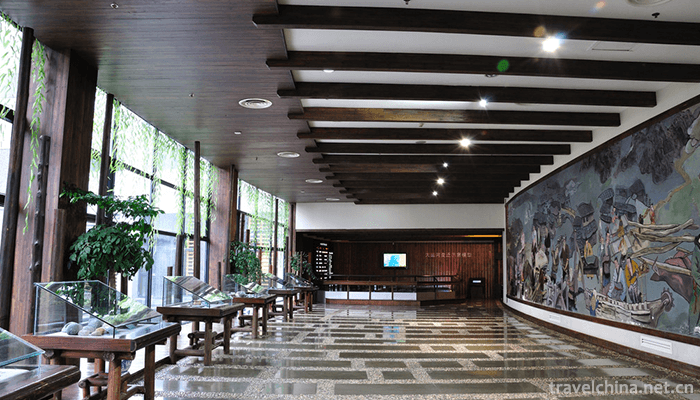
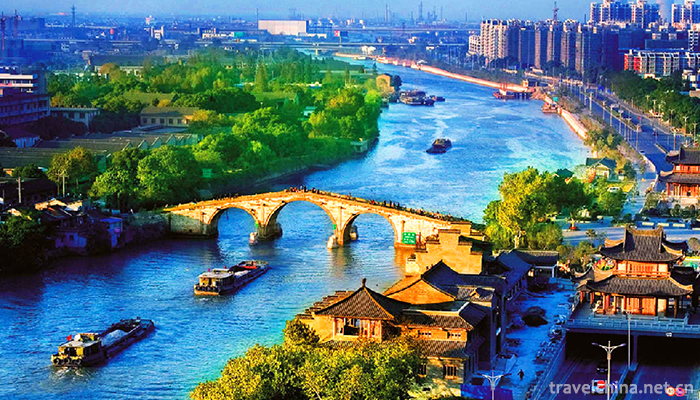
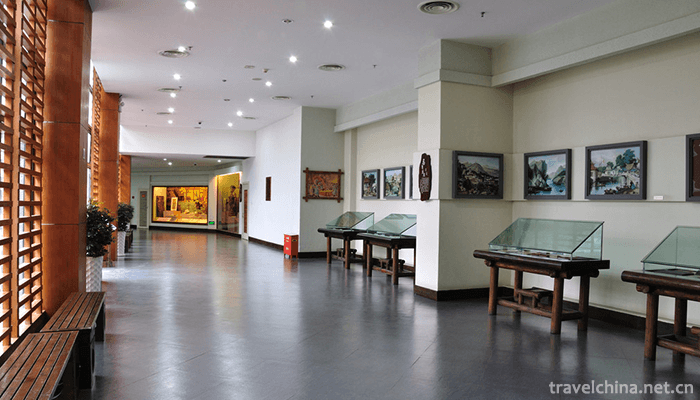
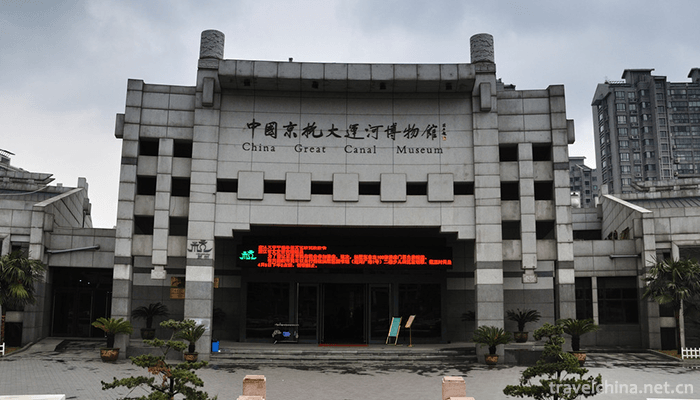
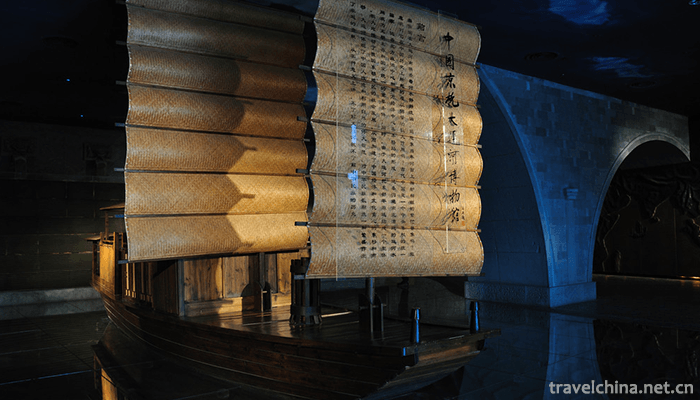
0 Questions
Ask a Question
Your email address will not be published.